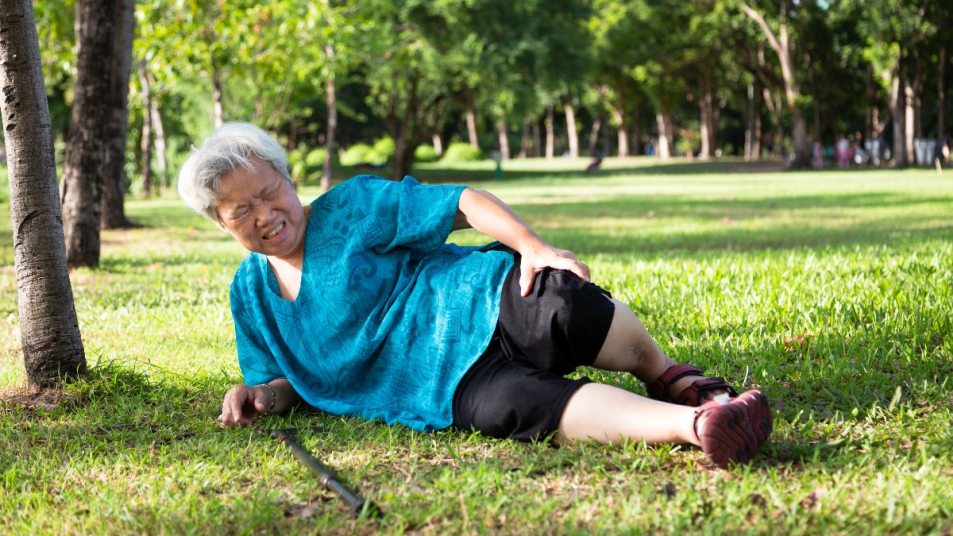The Unexpected Balance Exercise You Need to Do to Lower Your Fall Risk (Watch Video)
It takes about three minutes.

When we think about taking care of ourselves as we age, we often think of our diet, sleep, and exercise patterns. But our balance can get left out of the conversation, even though it’s incredibly important.
Why is balance so significant? As the CDC states, falls are the leading cause of injury-related deaths among adults age 65 and up. And while a fall might not sound deadly at first, one out of five falls causes a serious injury, from hip fractures to brain trauma. Medications that increase the risk of bleeding, like blood thinners, can increase the risk of serious injury.
“Balance is essential for living an active life as you age,” Grant Radermacher, a doctor of chiropractic at Ascent Chiropractic, tells Woman’s World. “Unfortunately, due to loss of muscle mass, balance naturally declines as we age, and that can lead to falls.” Bone loss from aging and conditions like osteoporosis can up your risk of dangerous falls, too.
Many adults simply cut down on their activities out of fear, but that’s not the answer. It worsens the problem, and leads to a lower quality of life.
Instead, Dr. Radermacher recommends practicing exercises every day to improve your balance. “You can offset muscle mass loss and balance degradation with targeted exercises and strength training,” he says.
Why You Should Exercise Your Glutes
You might think that the best balance exercise would be one that really tests your balance — such as standing on one leg. While this move is great for balance, you might want to focus on strengthening your muscles first.
“When it comes to balance and stability, by far the most common exercises I prescribe to patients are glute strengthening moves,” Dr. Radermacher says. “Improving these muscles is absolutely critical for pelvic stability and overall balance – and it’s the top thing you can do at home to prevent (or reduce) low back pain. It’s also why they’re a staple in so many of the rehab exercise plans I give my patients.”
The gluteus muscle is technically a muscle group. It describes the large muscles of the buttocks, which stretch from your hip bone to your femur (your thigh bone). Strong gluteals promote proper pelvic alignment, a healthy walking gait, balance, and low back support.
If you don’t always have time for a full glute workout, don’t worry — Dr. Radermacher shares what he considers to be the most important move.
The Best Glutes Exercise for Balance
“There are plenty of exercises that strengthen your glutes, but if you’ve only got time for one, the banded glute bridge should be it,” Dr. Radermacher says. “The glute bridge (with or without weight) is an excellent move by itself for activating your gluteus maximus and core muscles. But you can double its effectiveness and hit the rest of the glute muscles simply by adding a resistance band loop around your thighs and pushing your knees out to make it an unbeatable 2-in-1 exercise.”
What is a glute bridge, exactly? It’s a lot easier to show you! Below is a video of Dr. Radermacher’s assistant performing the glute bridge.
If you’re just starting out, complete two sets of five repetitions. (Hold the bridge for about five seconds per rep.) As you build your strength, increase your reps to four sets of five, or 20 reps total. That’s about three minutes — easy to do right after you get out of bed!
For even more balance practice, take a look at this 10-minute video class called Better Balance in Minutes!












